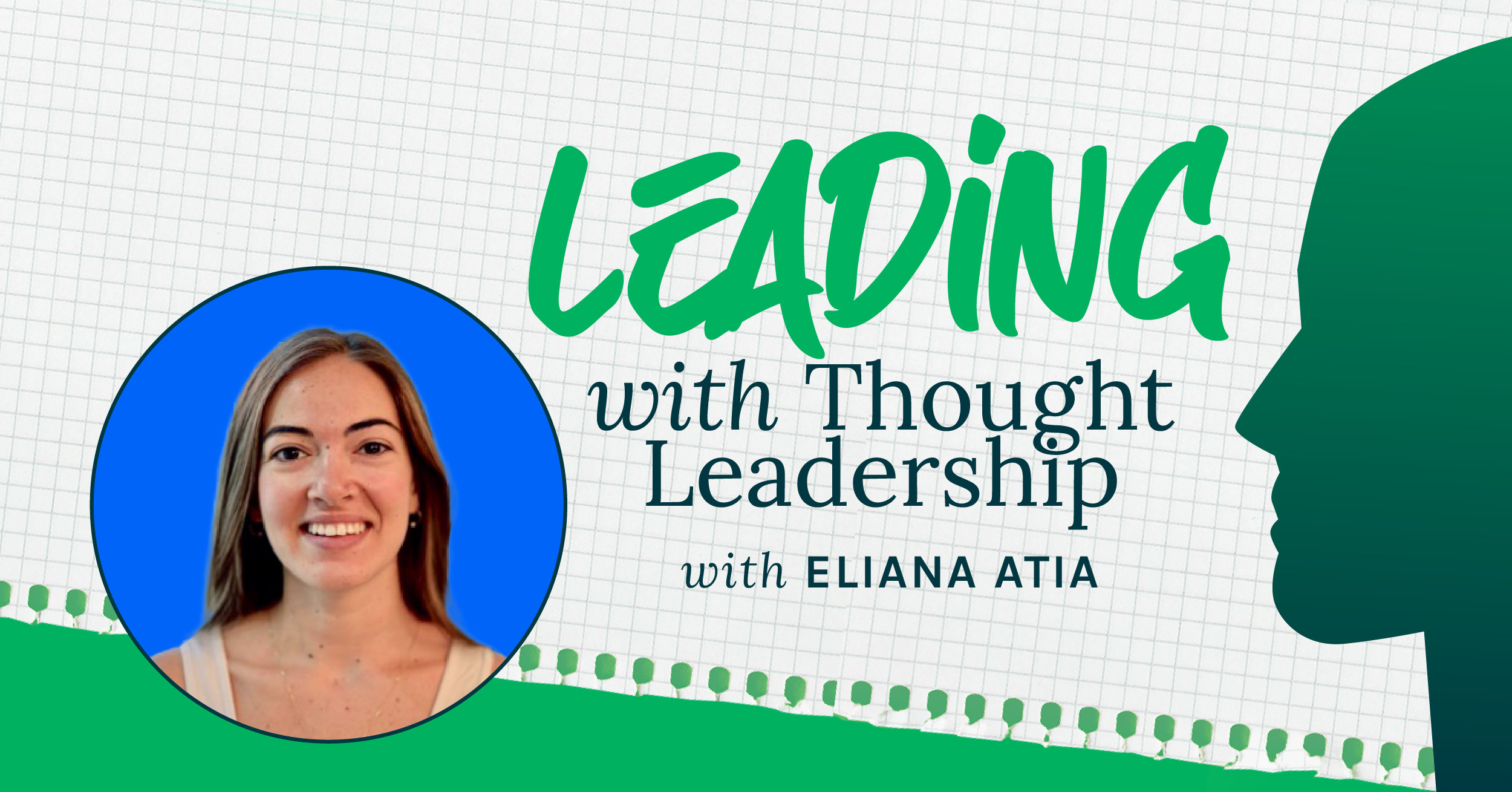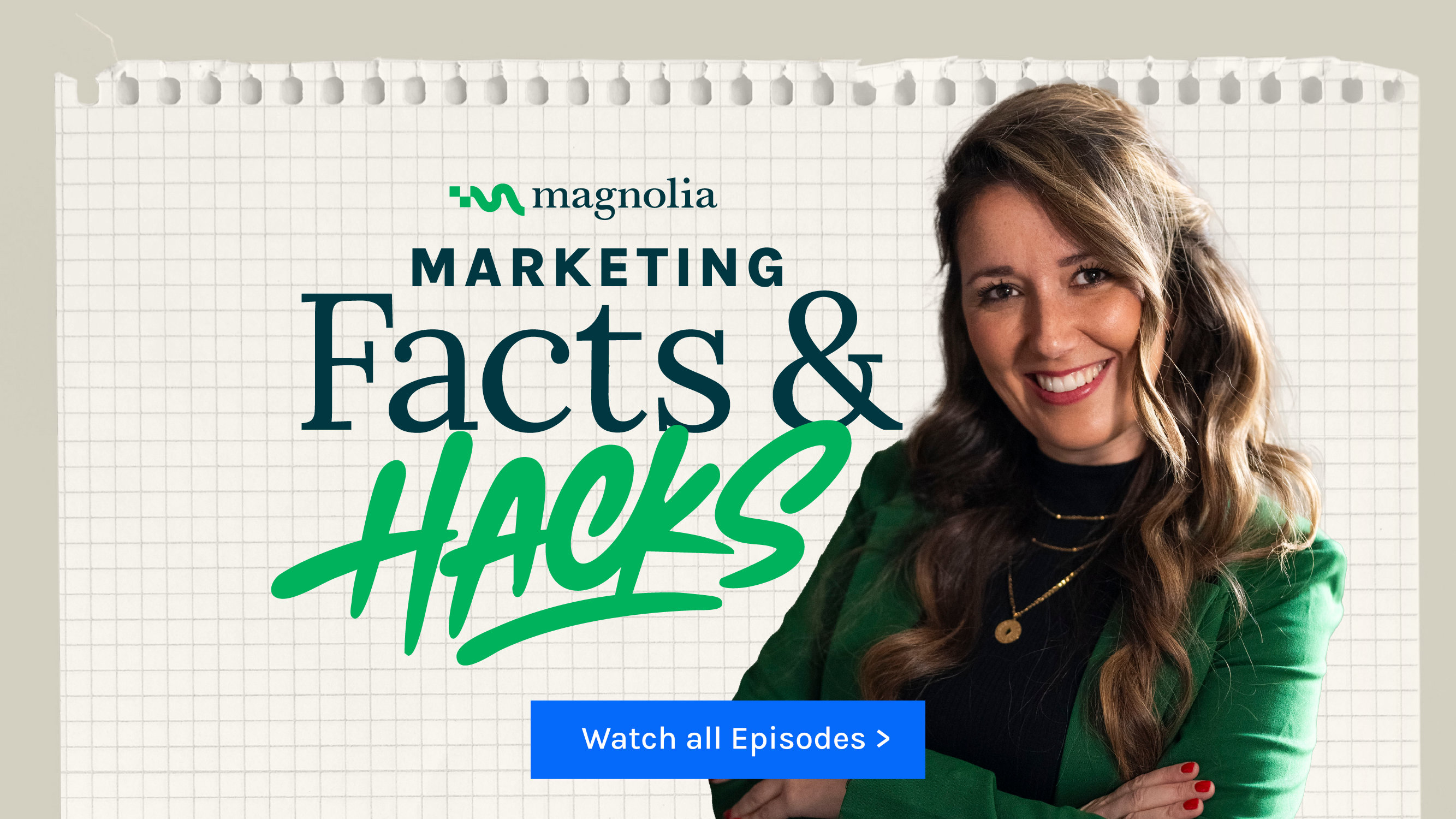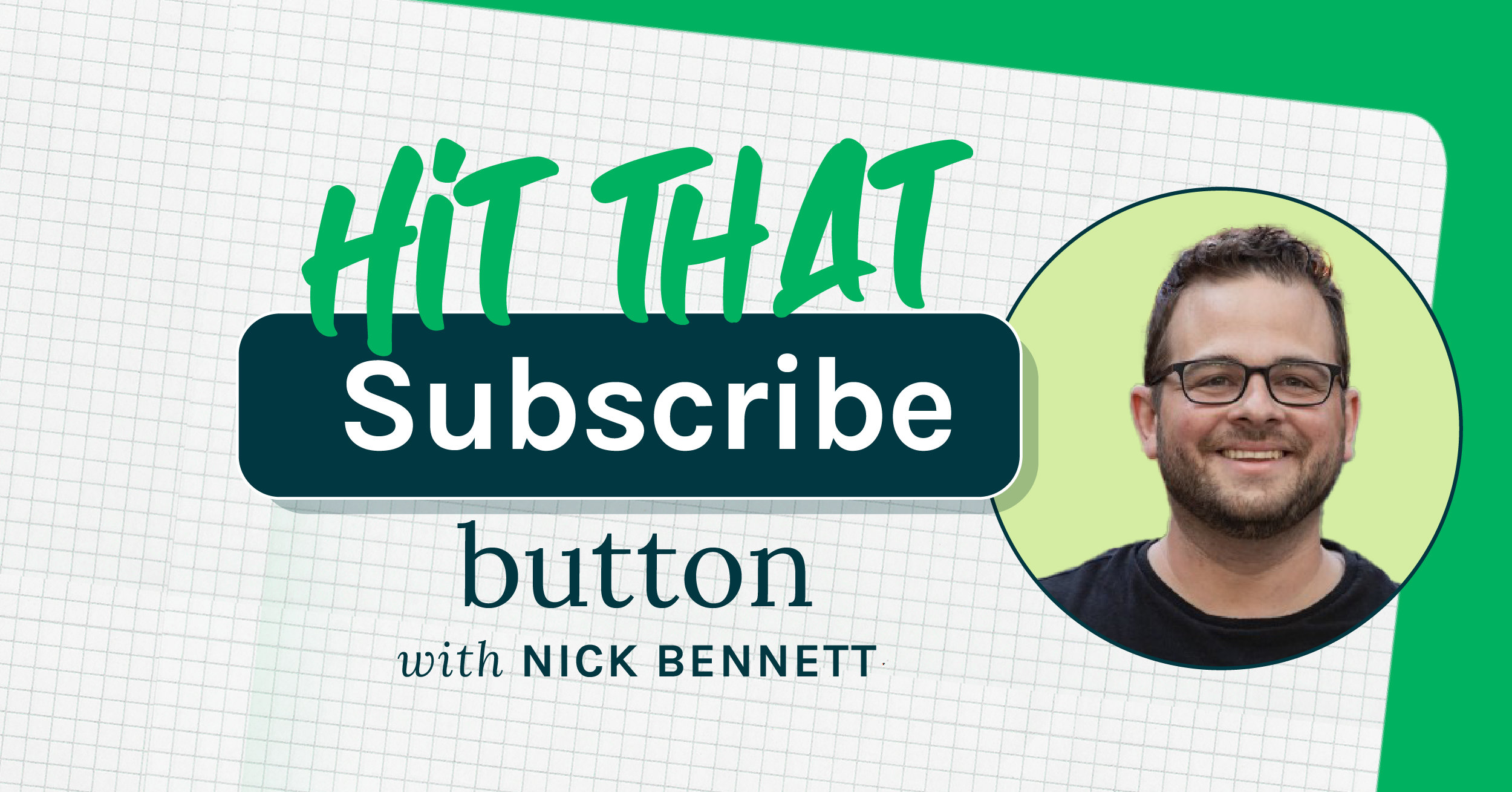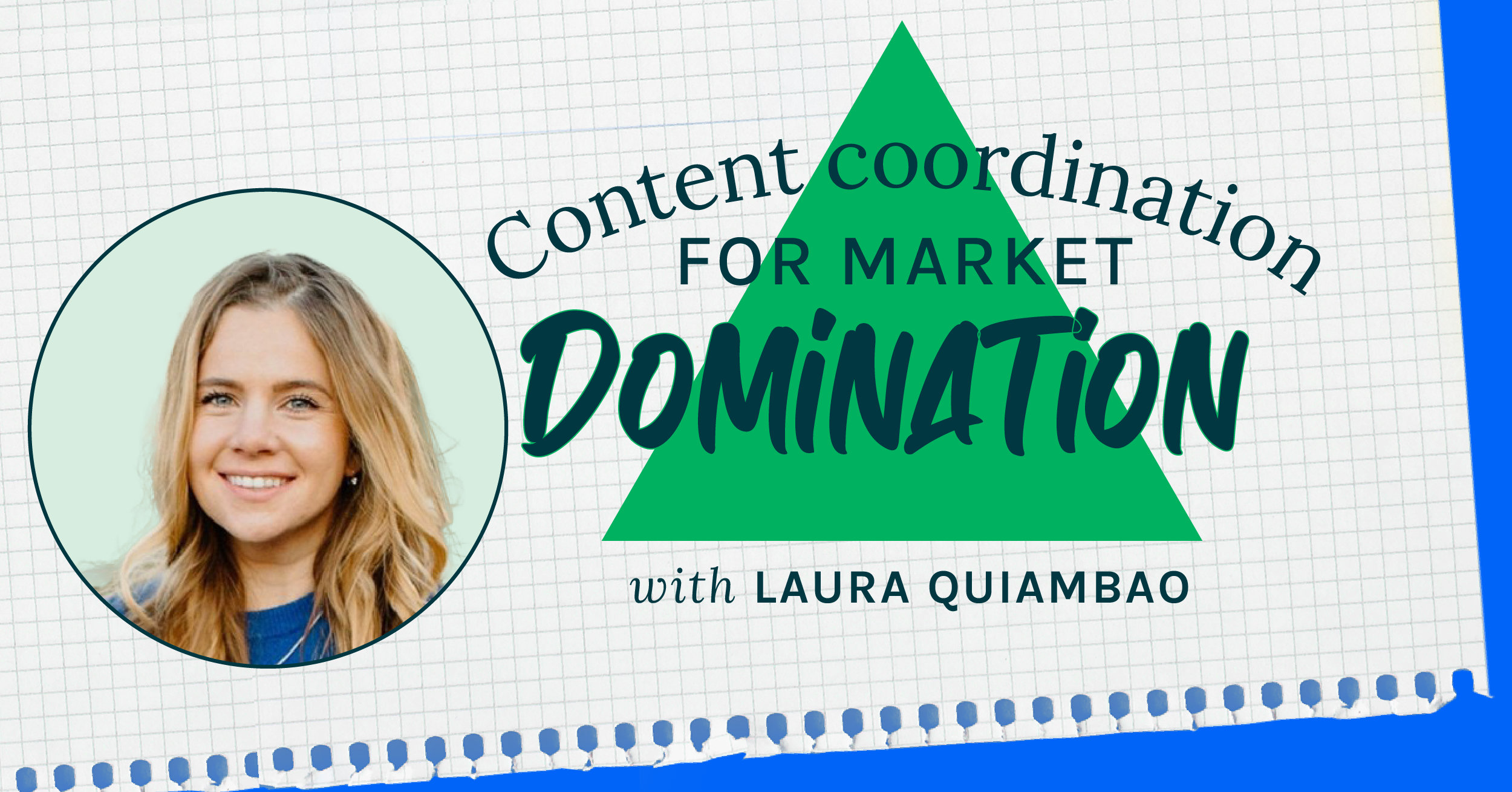- Sep 15, 2025
- --
Thought leadership that actually leads
Marketing Facts & Hacks Episode 4
Experience Magnolia in action
Experience Magnolia's key features firsthand in an interactive product tour.
Take a tour nowOnce you know who you’re targeting, figure out where they’re consuming content. What platforms do they trust? What channels do they spend their time on? Knowing this will help you focus your efforts and ensure your content reaches the right people.
Next, get clear on who you’re talking to. Who is your target audience? What do they care about? And how do you want them to perceive your brand? Understanding your audience is crucial for crafting content that resonates and moves the needle.
Strategically distribute
Once you know who you’re targeting, figure out where they’re consuming content. What platforms do they trust? What channels do they spend their time on? Knowing this will help you focus your efforts and ensure your content reaches the right people.
Set KPIs to measure success
Eliana emphasizes that setting clear key performance indicators (KPIs) is crucial to measuring the success of your content. Whether it’s engagement rates, conversion rates, or other metrics, having measurable goals ensures you can track progress and improve.
Craft the right messaging
Finally, messaging is everything. Once you’ve got your strategy, audience, distribution methods, and KPIs, you need to define what you want your audience to understand about your brand. What gaps can you close for them? What insights can you provide that will help them make decisions? This is where your thought leadership content shines—by providing value that truly moves the needle.
Everything begins with understanding your business goals. What do you want to achieve in the next year? Whether it’s growth, product adoption, or increased brand awareness, your content strategy needs to align with these objectives.
A lot of people get thought leadership wrong. It isn’t about recycling ideas that are already out there – it’s about actually being a leader in your industry and using that influence to build relationships with prospects to drive revenue. That means you need an interesting perspective that gets your core audience excited.
Easier said than done, I know.
Thought leadership can be immensely powerful when you get the combo right. That’s why this episode of Marketing Facts and Hacks is dedicated to creating thought leadership content that sparks new ideas and is actually aligned with key business objectives. And by “business objectives,” we mean focused, time-bound goals tied to specific success metrics.
The Facts: Thought leadership’s impact on decision-makers
Let’s start with the facts. According to a study from LinkedIn and Edelman, 54% of C-suite executives spend an hour or more each week reading thought leadership content. What’s even more telling? 73% of these decision-makers view thought leadership as the most trustworthy way to assess a company’s capabilities—more so than traditional marketing materials like product sheets. So it’s no surprise that content marketing generates three times as many leads as traditional marketing and costs 62% less, according to Demand Metric. That’s a huge win for any brand producing high-quality thought leadership content.
But here’s the thing: only 48% of these decision-makers say the content they’re reading is actually good. It’s clear there’s a gap between producing thought leadership and making sure it resonates with your audience. At Magnolia, we believe great thought leadership content is built strategically. Every piece of content should support specific marketing objectives—whether that’s changing audience behavior, boosting returning users, or driving more form fills.
If you’re not already focused on building a strong thought leadership engine, now’s the time to start. To help lay the right foundation for success, I brought in Eliana Atia, Group Content Lead at monday.com whose thought leadership is always making waves in the B2B space. Eliana and her team have a proven track record in creating content that not only informs but also moves prospects down the funnel and she’s here to share her best tips for building a content strategy that actually works.
The Hack: Building a thought leadership strategy
Even seasoned content marketers are missing fundamental steps. According to Eliana, here’s what you need to do:
Start with Your Business Strategy - Everything begins with understanding your business goals. What do you want to achieve in the next year? Whether it’s growth, product adoption, or increased brand awareness, your content strategy needs to align with these objectives.
Know Your Audience - Next, get clear on who you’re talking to. Who is your target audience? What do they care about? And how do you want them to perceive your brand? Understanding your audience is crucial for crafting content that resonates and moves the needle.
Strategically Distribute - Once you know who you’re targeting, figure out where they’re consuming content. What platforms do they trust? What channels do they spend their time on? Knowing this will help you focus your efforts and ensure your content reaches the right people.
Set KPIs to Measure Success - Eliana emphasizes that setting clear key performance indicators (KPIs) is crucial to measuring the success of your content. Whether it’s engagement rates, conversion rates, or other metrics, having measurable goals ensures you can track progress and improve.
Craft the Right Messaging - Finally, messaging is everything. Once you’ve got your strategy, audience, distribution methods, and KPIs, you need to define what you want your audience to understand about your brand. What gaps can you close for them? What insights can you provide that will help them make decisions? This is where your thought leadership content shines—by providing value that truly moves the needle.
Watch the full episode here:
Why it works: A strategic, focused approach
Eliana’s advice is spot on. The key to effective thought leadership is ensuring your content is strategic, focused, and aligned with your broader business objectives. By understanding your audience, setting measurable goals, and crafting content that delivers real value, you can build a thought leadership engine that propels your brand forward.
A lot of marketers still use the terms “goals” and “objectives” interchangeably. There are key differences. A goal is a broader direction of where you want your business to go. For example, your company might have the goal of “expanding into a new geographic region.” An objective is tied to the goal but specific, measurable, and time-bound. So, if your goal is to expand into a new geographic region, your objective might be to “increase form fills in the UK by 25% by December 1, 2025.” Being this specific will help you tailor your thought leadership topics to what your audience cares most about, leading to more tangible results.
Want more episodes of Marketing Facts and Hacks?
Check out the show page to learn from leading tech marketers how to build content marketing campaigns that drive real business outcomes!









